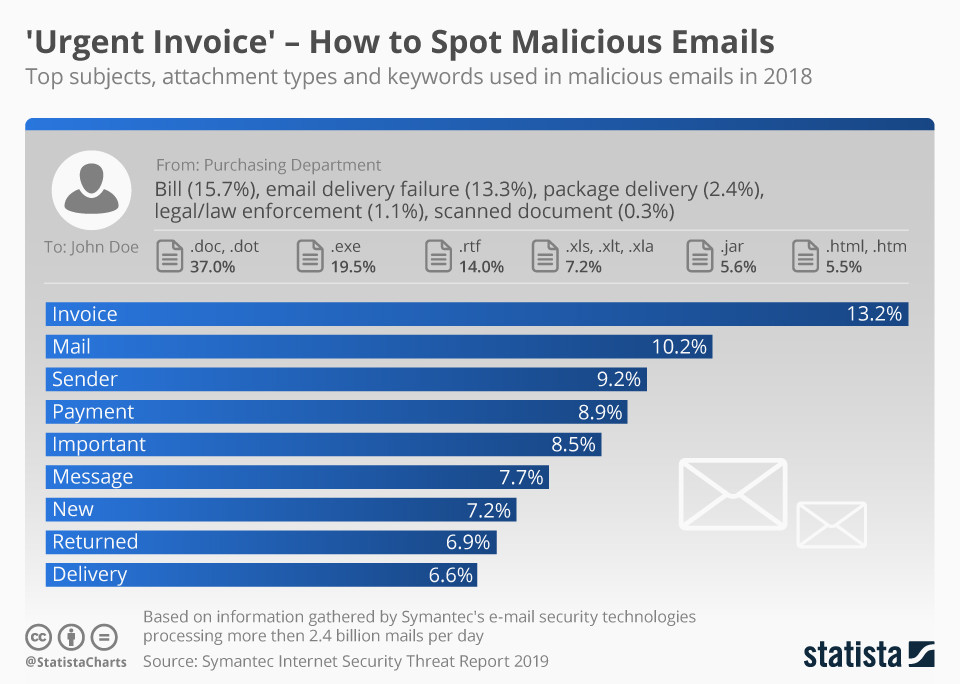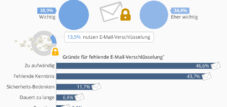One of the skills required in the 21st century workplace is the ability to distinguish legitimate emails from malicious ones. Ignoring hundreds of spam emails every month is one thing, but dealing with malware and ransomware attacks that could cost your business millions in damages is a whole different ball game.
According to Symantec's latest Internet Security Threat Report, 55 percent of emails received by employees in 2018 were classified as spam and 1 in 412 emails were classified as malicious, meaning potentially harmful.
The following table, based on Symantec's findings, shows which subjects, attachments and keywords are most commonly used in malicious emails and should be considered a red flag for vigilant employees.
One of the skills required in the 21st century work-life is the ability to distinguish legitimate emails from malicious ones. Ignoring hundreds of spam emails every month is one thing but dealing with malware and ransomware attacks that could cost your company millions in damages is an entirely different ballgame.
According to Symantec's latest Internet Security Threat Report, 55 percent of emails received by employees in 2018 were categorized as spam and 1 in 412 emails was considered malicious, ie potentially harmful.
The following chart, based on Symantec's findings, shows which subjects, attachments, and keywords are most often used in malicious emails and should be considered red flags to vigilant employees.


